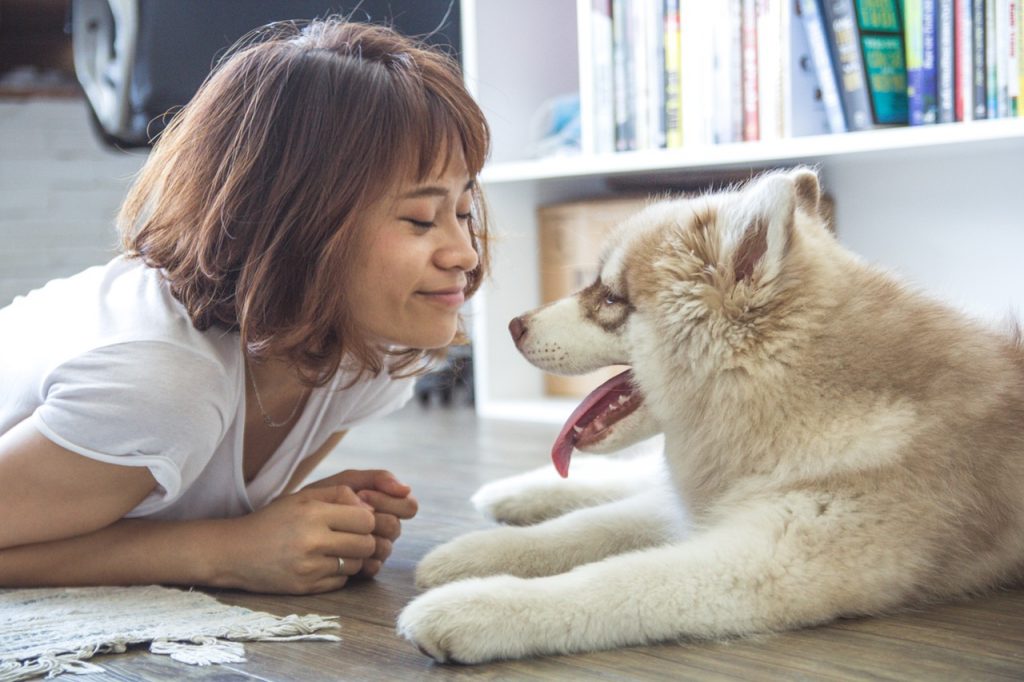
Behavioral issues can start at any age and any time in a dog’s life, even if the dog has lived with the same owner for years. Owners often look for an easy explanation for their dog’s behavior problems; one common misconception is that a dog will misbehave as a way of getting back at the owner for something.
As convenient as it is to believe a dog exhibits certain behaviors to “get back” at their owner, believing this is unfair to the dog, as dogs are not capable of plotting against us.
If there isn’t a physical problem causing the dog to have issues (such as accidents in the house, chewing, or barking), the root cause of the behavior is more than likely related to a change in the dog’s routine or a lack of structure and routine.
If you really think about it, most issues with a dog’s behavior can be traced back to a point where something changed in their routine. Maybe someone in the family took on a second job and has a new work schedule; maybe you’ve been traveling a lot; maybe you got a new pet or you moved to a new house. Any of these changes can be very stressful for a dog.
The unwanted behavior could be caused by something as simple as the weather got colder – or rainier or icier or muddier – and you stopped walking as much. Maybe you’re just stressed about something, and your dog knows it and is also feeling stressed as a result.
A stressed dog will act out of character. She might start showing signs of “separation anxiety,” such as crying or howling when left alone. She might start chewing on rugs or going to the bathroom in the house. She might become more territorial, possessive of her owner, more vocal, or more aggressive. This new behavior left unchecked can become the new norm — and with any learned behavior, practice makes perfect.
All of these issues can be fixed as long as the owner makes the decision to be the one in control. Being in control means maintaining a routine for the dog. A dog wants to know where she is expected to rest when her owner is gone, when she will eat, and when she will be walked.
There is no perfect routine for dogs, but they do thrive when they get consistency. Dogs love excitement and adventures, yet it’s stressful for them if they aren’t given leadership and structure. That excitement can quickly turn into over-stimulation.
Providing a crate or dog bed
Most dogs do better if they are confined to a crate while their owners are away. It makes the dog feel better to know: “OK, this is where I’m supposed to be. No pressure.” Even if the dog is allowed full-range of the house, she will most likely choose her bed or the couch or a quiet corner to curl up in until her owner returns. What do you want your dog to do when you aren’t home? Most would prefer their dogs to relax and chill, so why not provide a perfect place for the dog to do so?
If your dog is going to the bathroom in certain areas of the house, you can try confining her to a different room or blocking off that portion of the house, but a crate is often a better option. Dogs don’t go where they sleep.
Dogs need specific meal times
I highly recommend that dogs are not “free feed.” Dogs want to work for their food, and it should always be used as a reward – not a freebie.
Feeding at specific meal times is one of the easiest ways to enforce leadership and keep the dog’s body on a consistent schedule. If your dog eats the same amount at the same times every day, you’ll know exactly when they need to go to the bathroom. You’ll also prevent them from becoming overweight or underweight.
Walking the dog daily
If you walk the dog when it’s most convenient for you, you will be more likely to follow through. Make it part of your own exercise routine as well.
We all know that providing enough exercise for our dogs prevents a lot of issues, so it’s important not to slack off on walking. The adage is true – a tired dog is a good dog. If you have a dog with separation anxiety, a consistent exercise routine is an absolute must. Make sure you’re walking every day for at least an hour. If your dog is suddenly having “accidents,” make sure to walk before leaving the house so you can make sure your dog actually went. If you are unwilling to walk your dog every day, then hire a dog walker.
When it’s colder or raining, a lot of dogs will not fully relieve themselves or they’ll try to hold it in order to get back inside quicker. This is yet another reason to make sure to walk the dog even in the winter.
Don’t walk your dog only to eliminate and then take them straight back inside. Most dogs can wise up to this and will hold on for as long as possible to prolong the walk. This can be confusing to the owner who might feel the dog doesn’t need to go.
Specific bathroom times
Some dogs will ask to go outside when they need to. Others will never ask to go out. If you keep your dog on a consistent routine, with meals, exercise, and bathroom breaks at the same times every day, you’ll know exactly how often your dog will need to go outside, regardless of whether or not she lets you know.
Dogs will eliminate when they feel comfortable and not in danger; a nervous dog might not go until they return to their home and then go in the backyard – this doesn’t mean you give up on walks.
Keep up the routine and keep it fun
When your dog is taken care of well, there will be less behavioral problems, meaning more time to enjoy the fun and companionship that owning a dog can provide the both of you. Good luck!

















